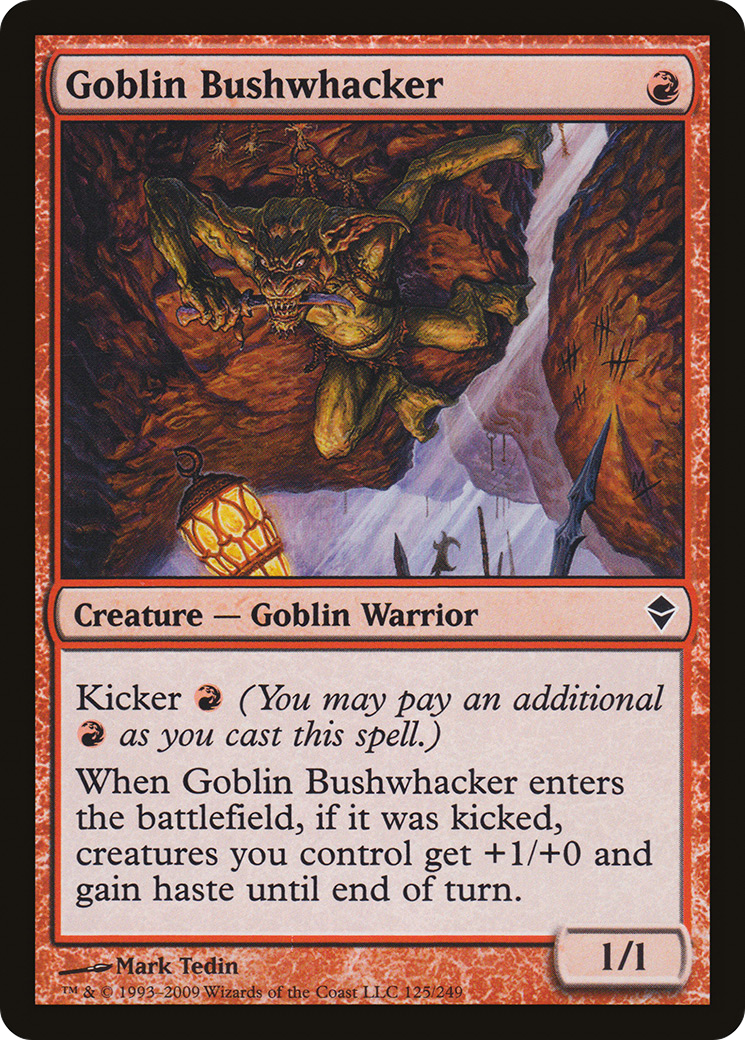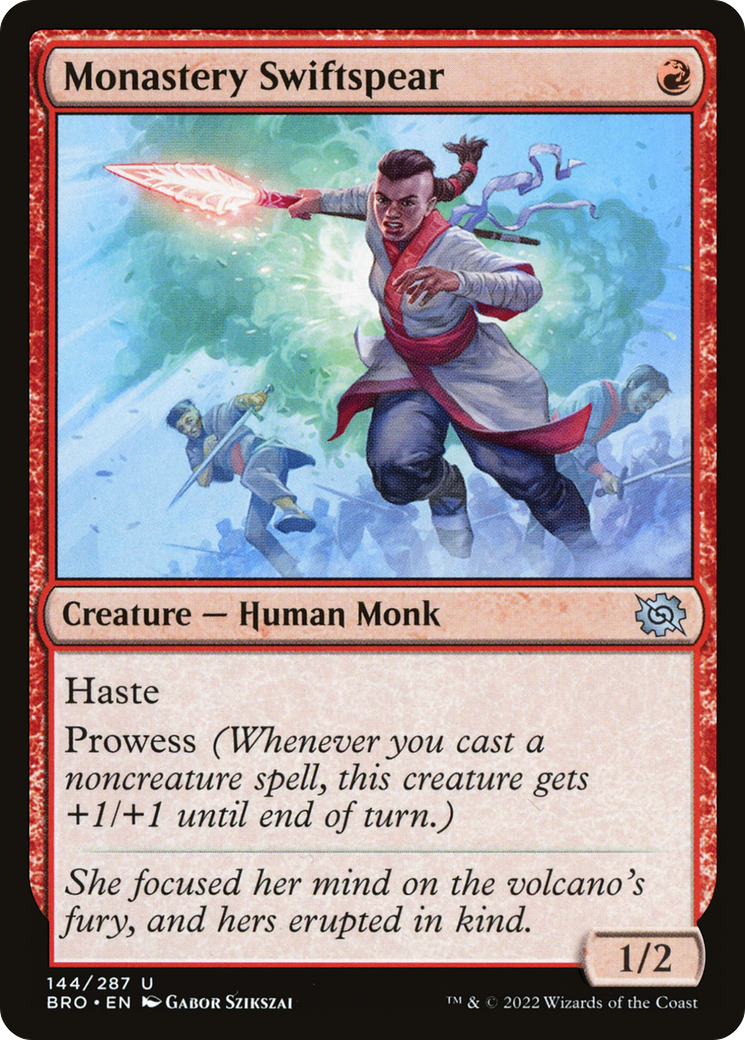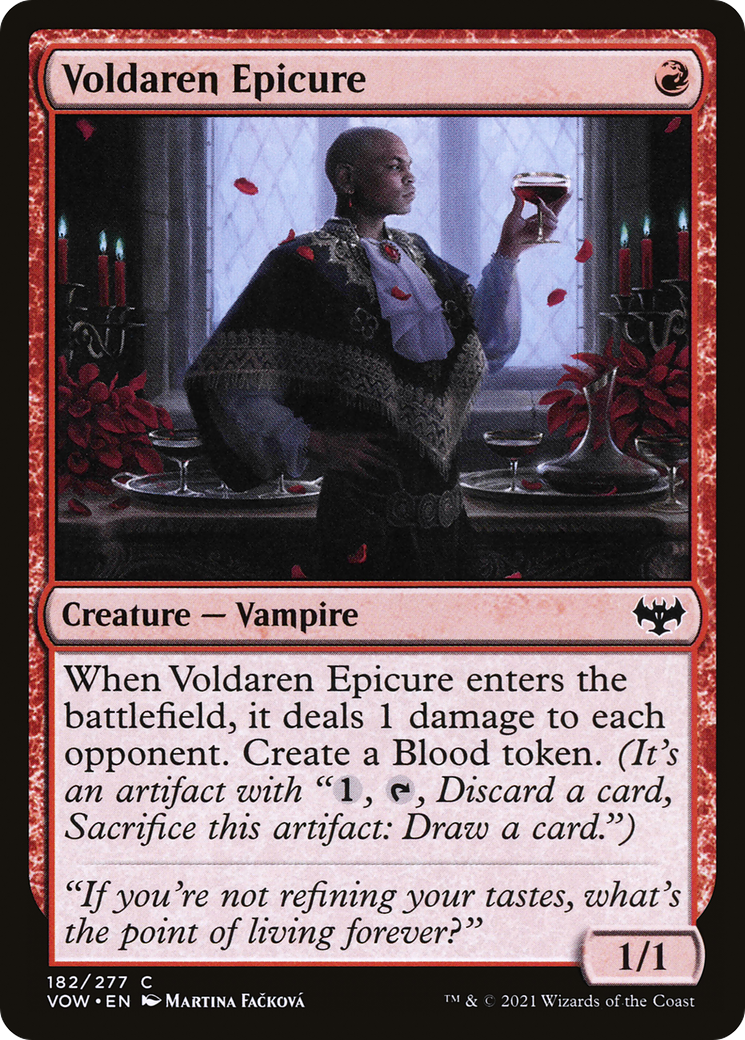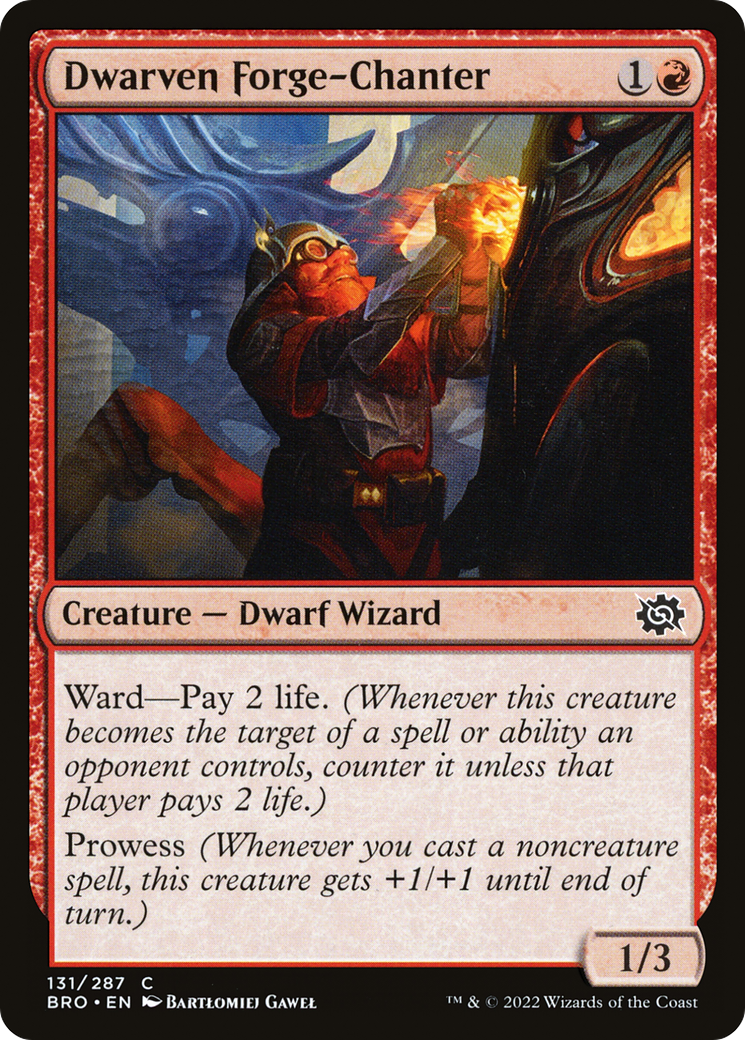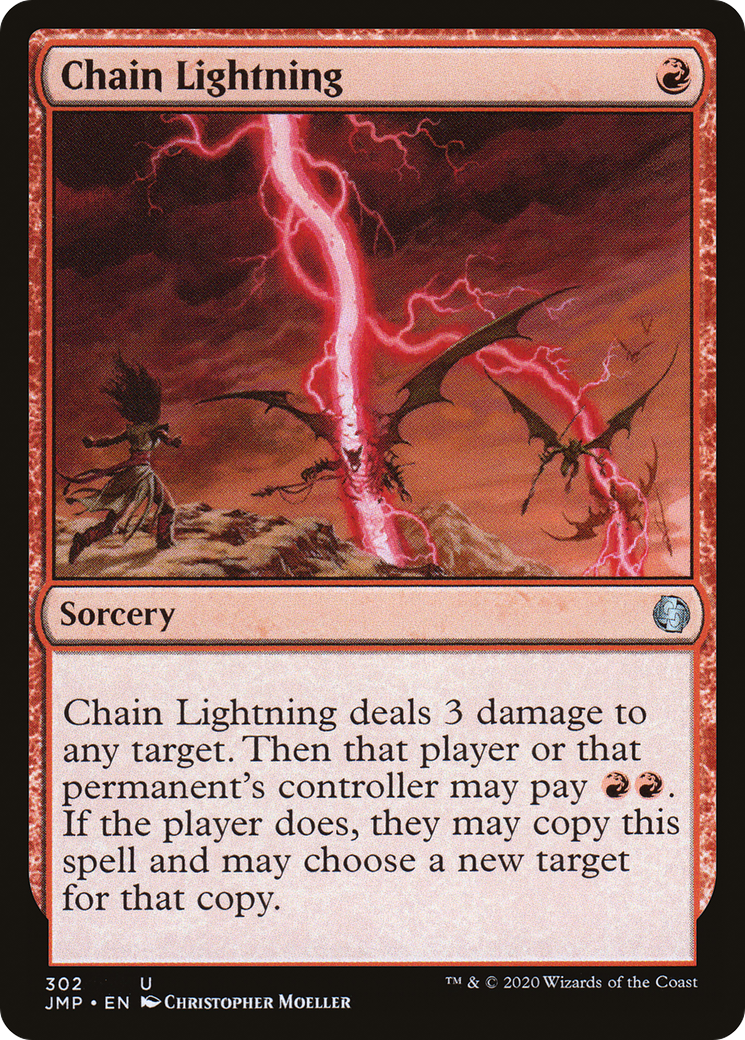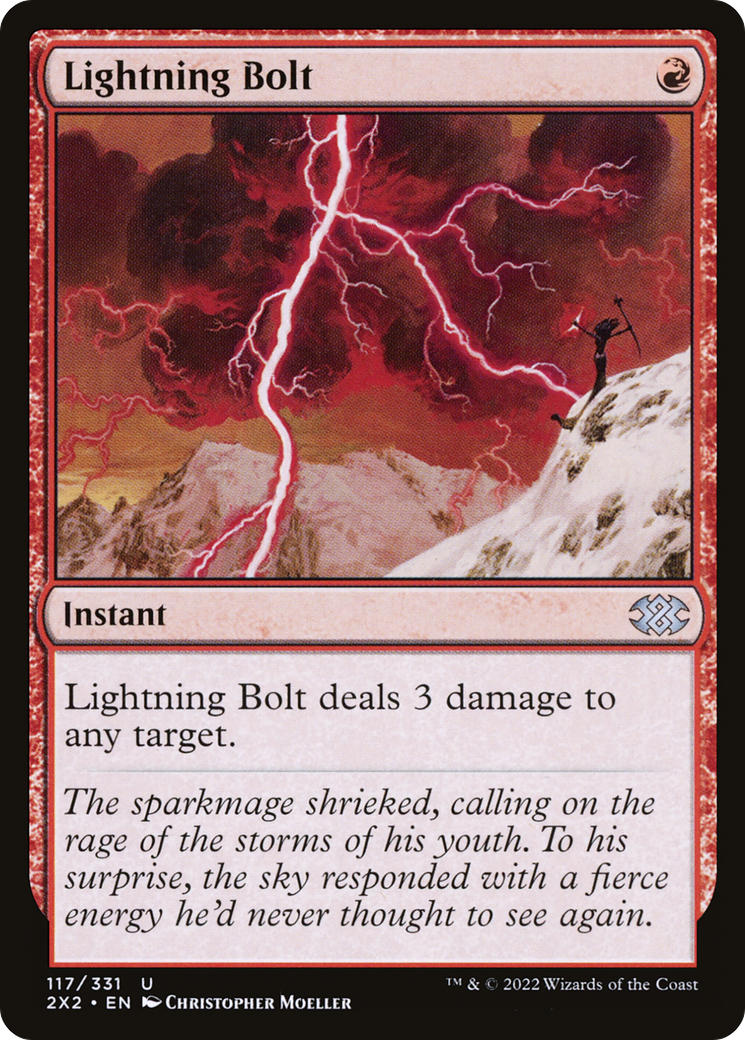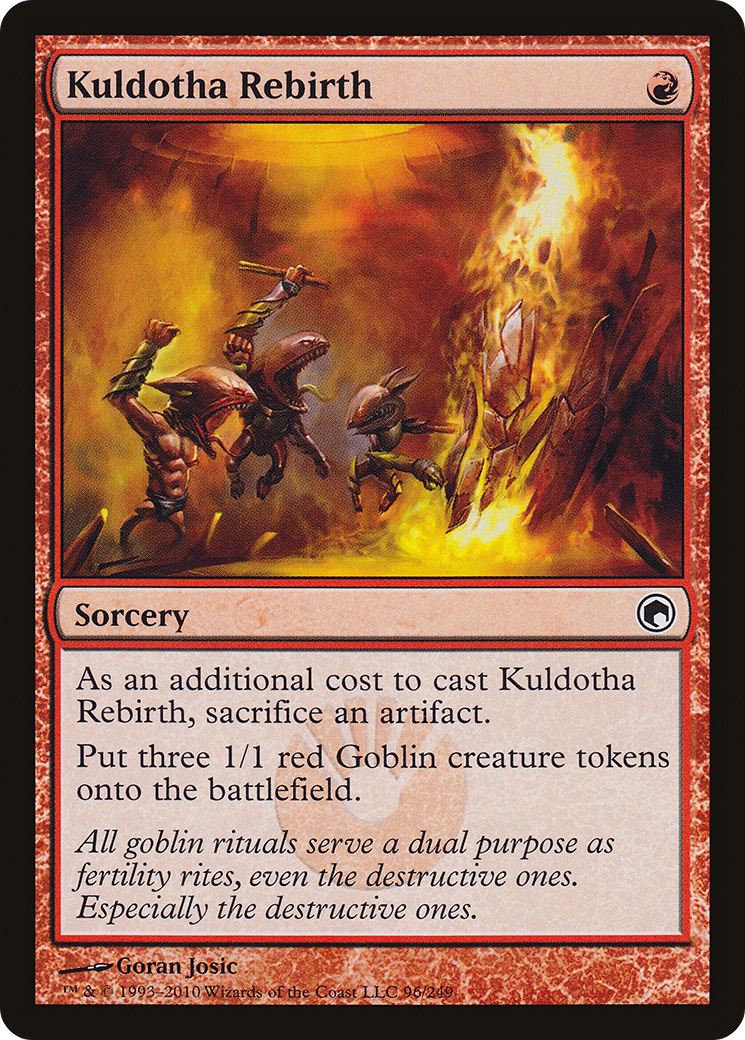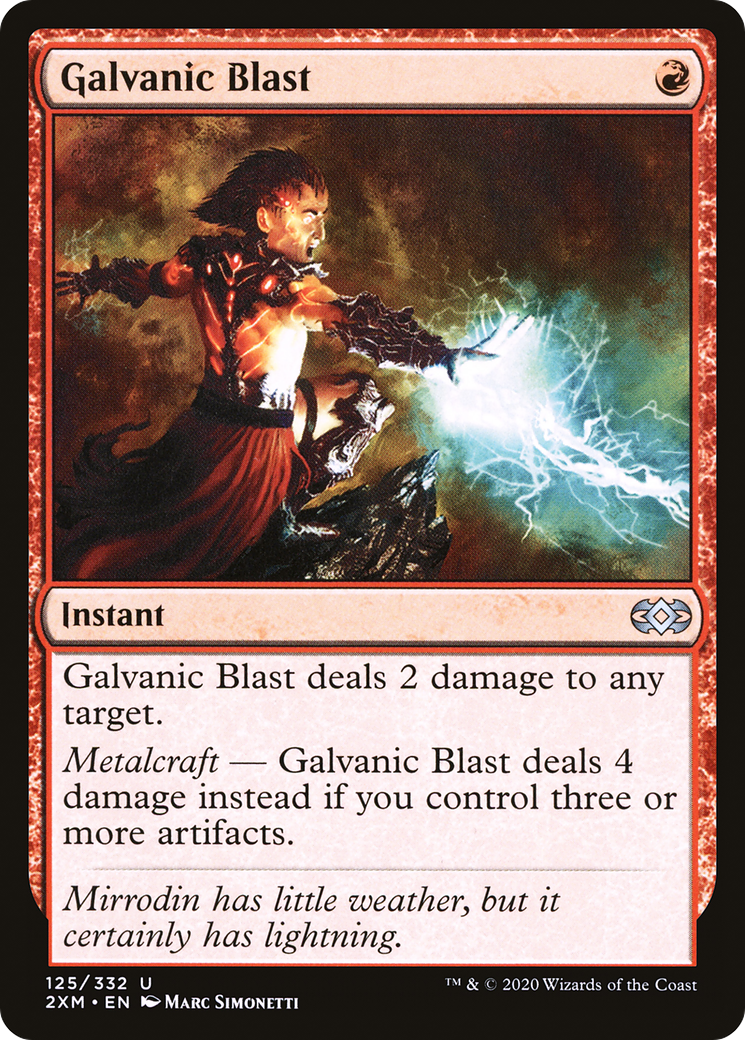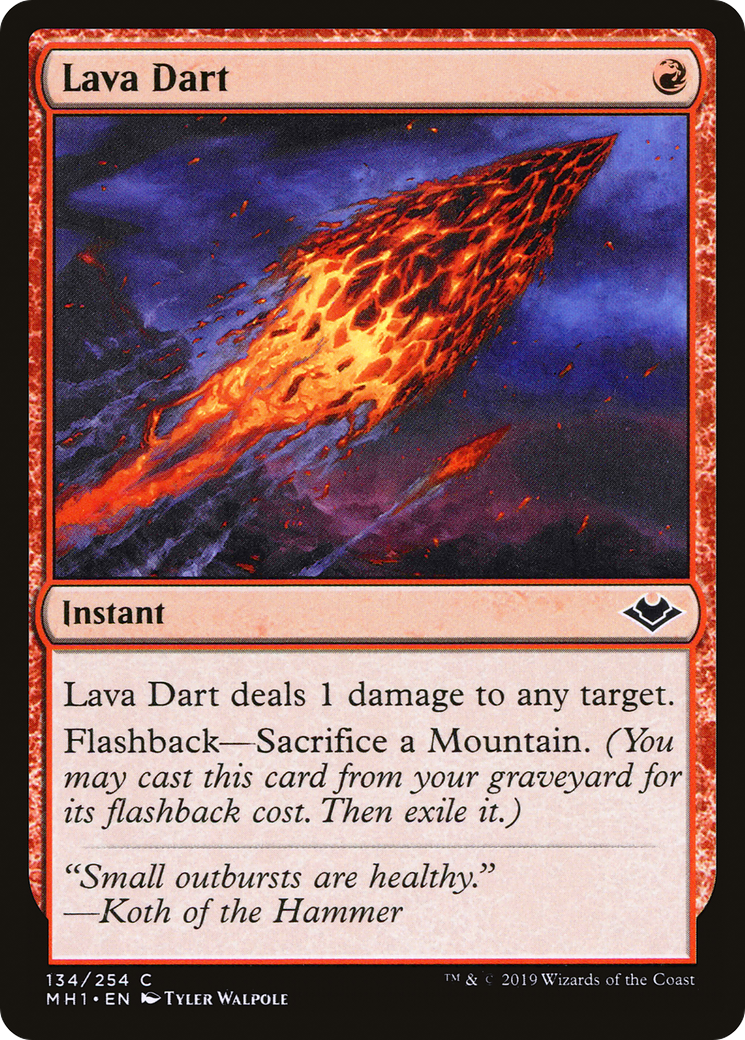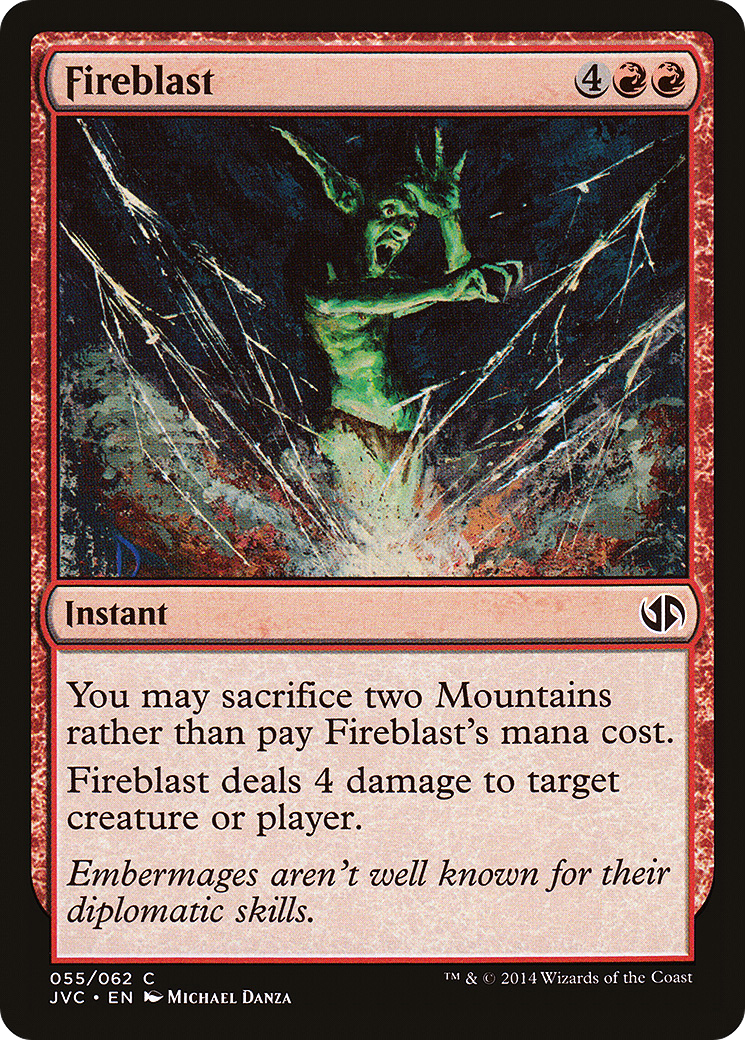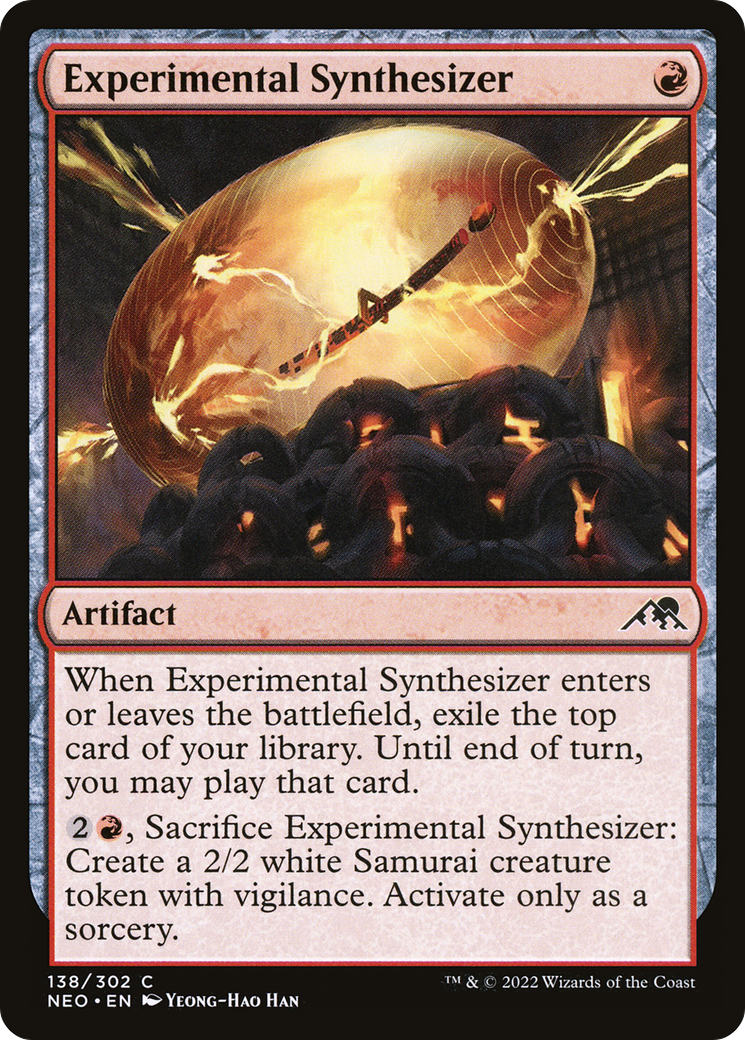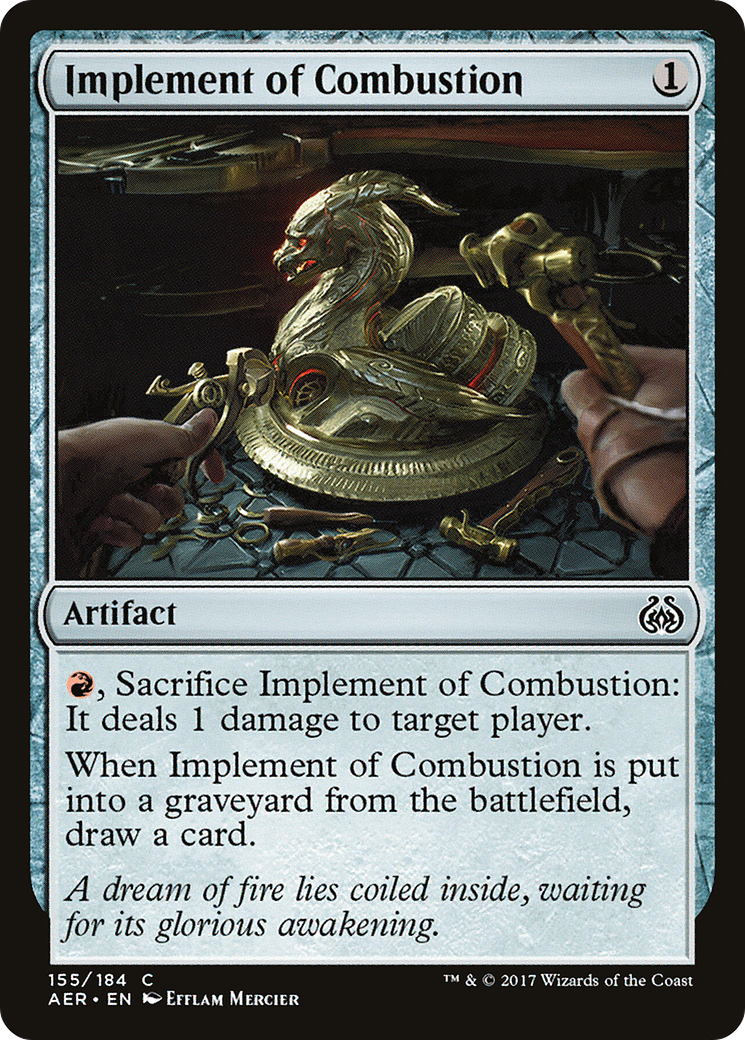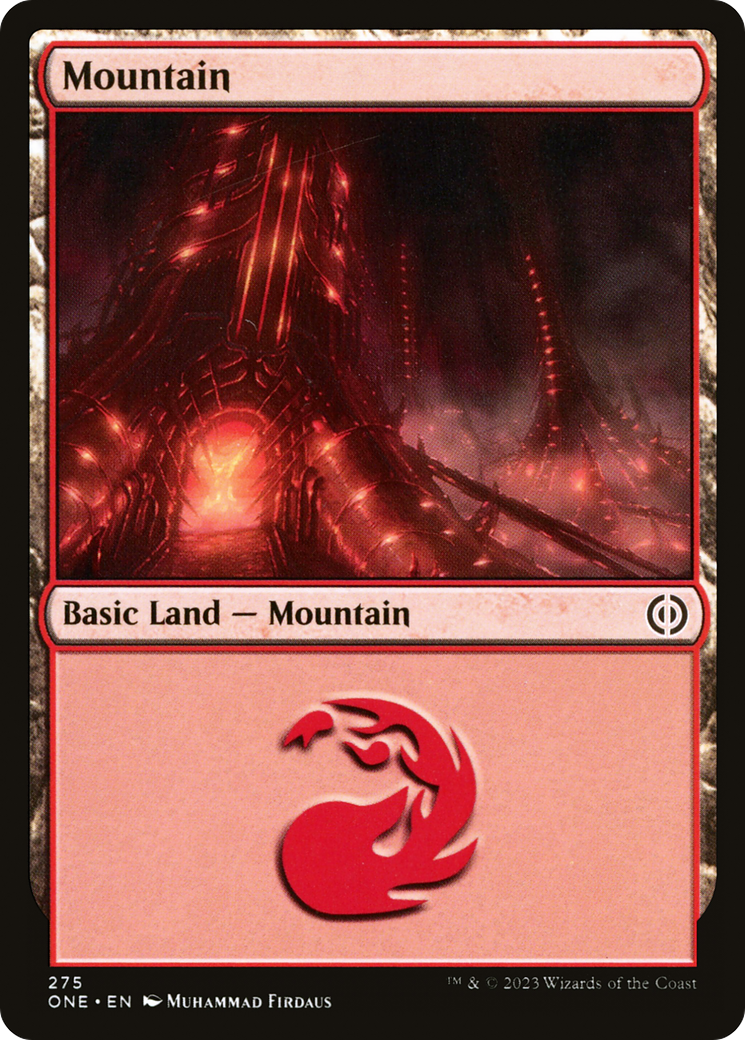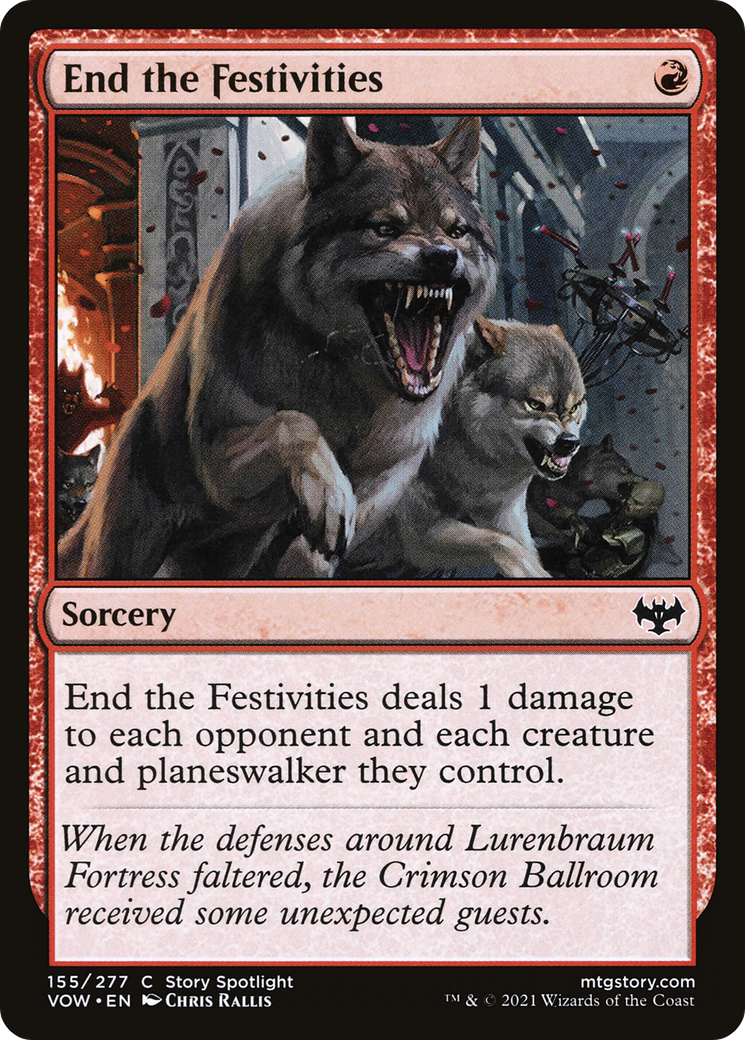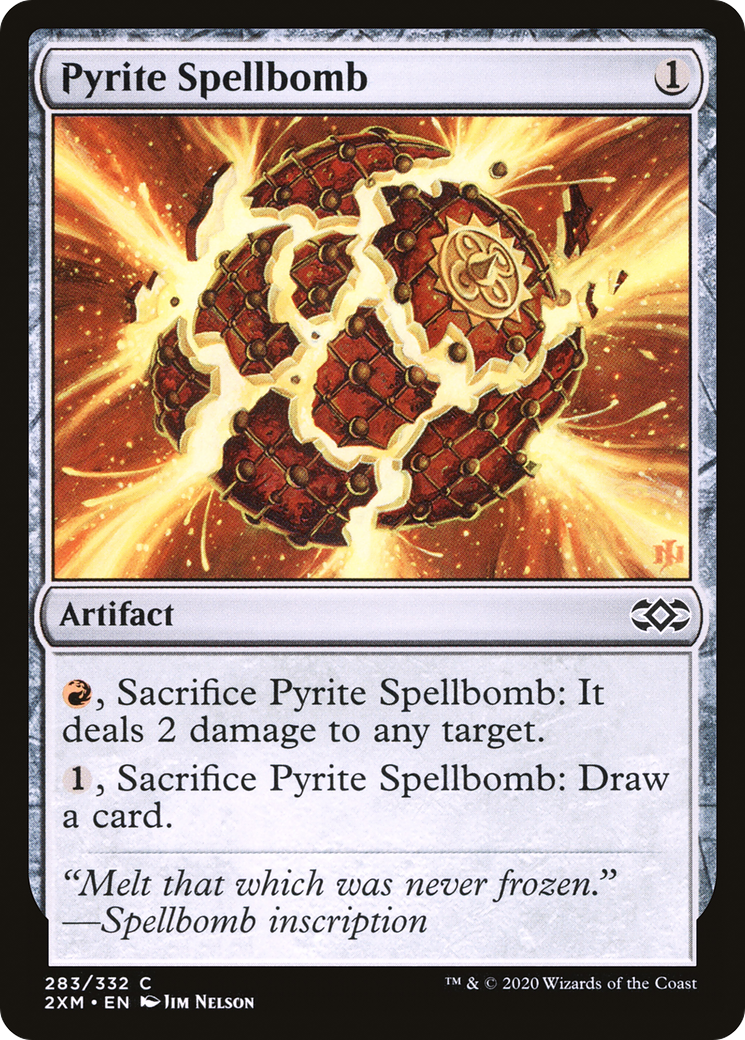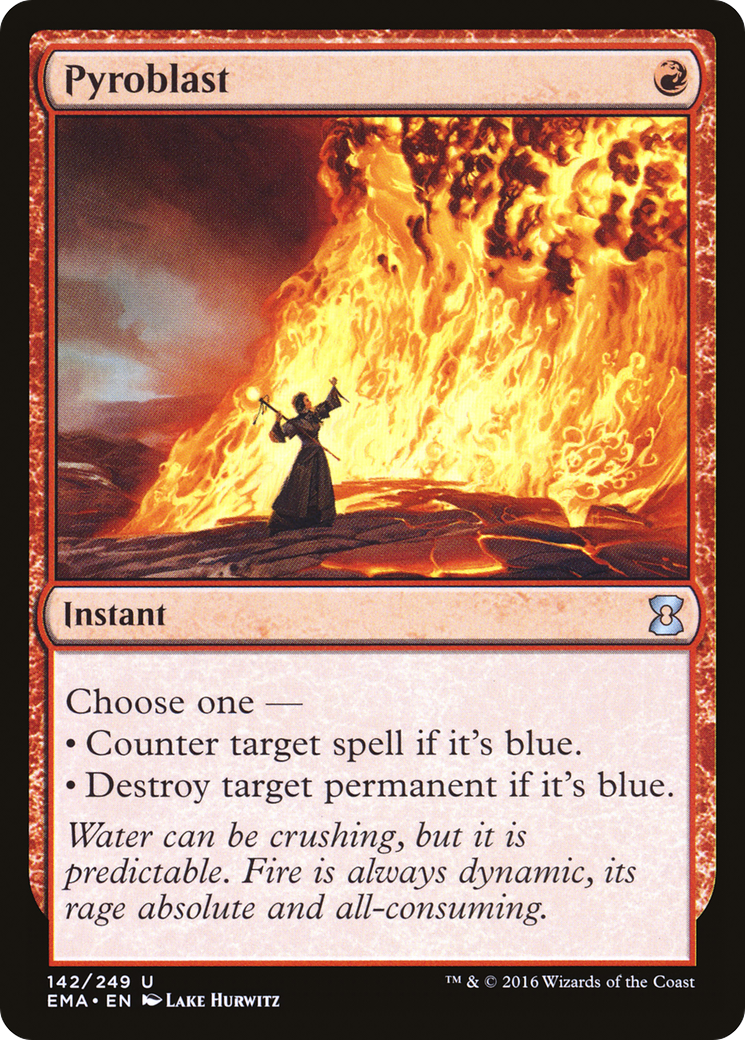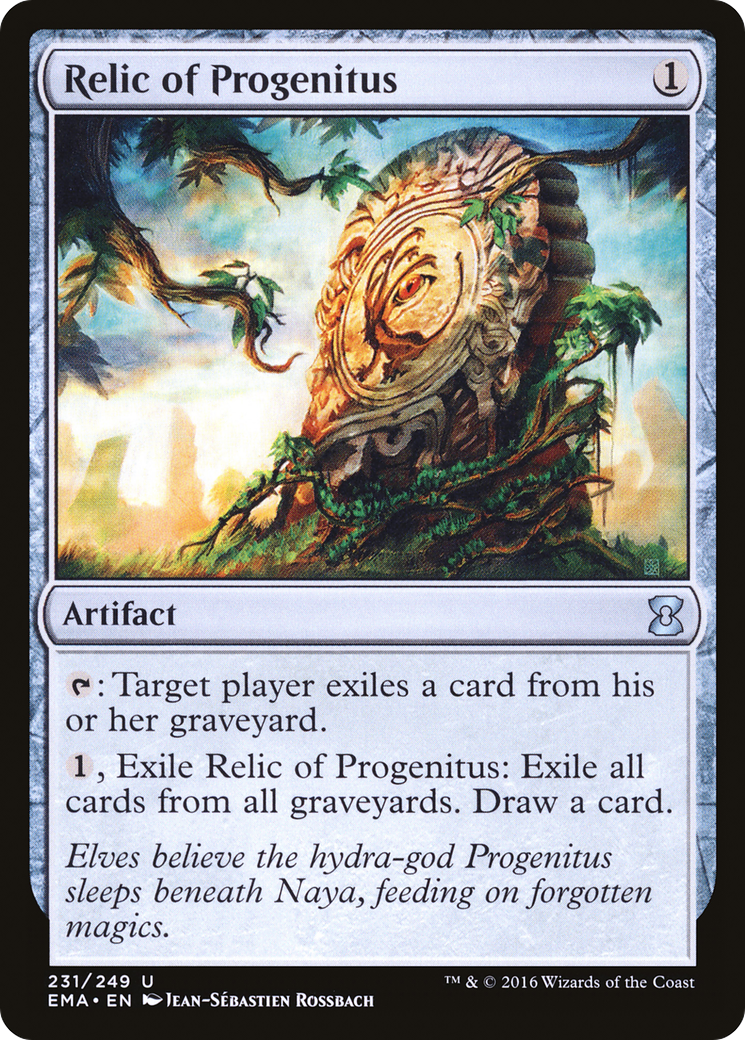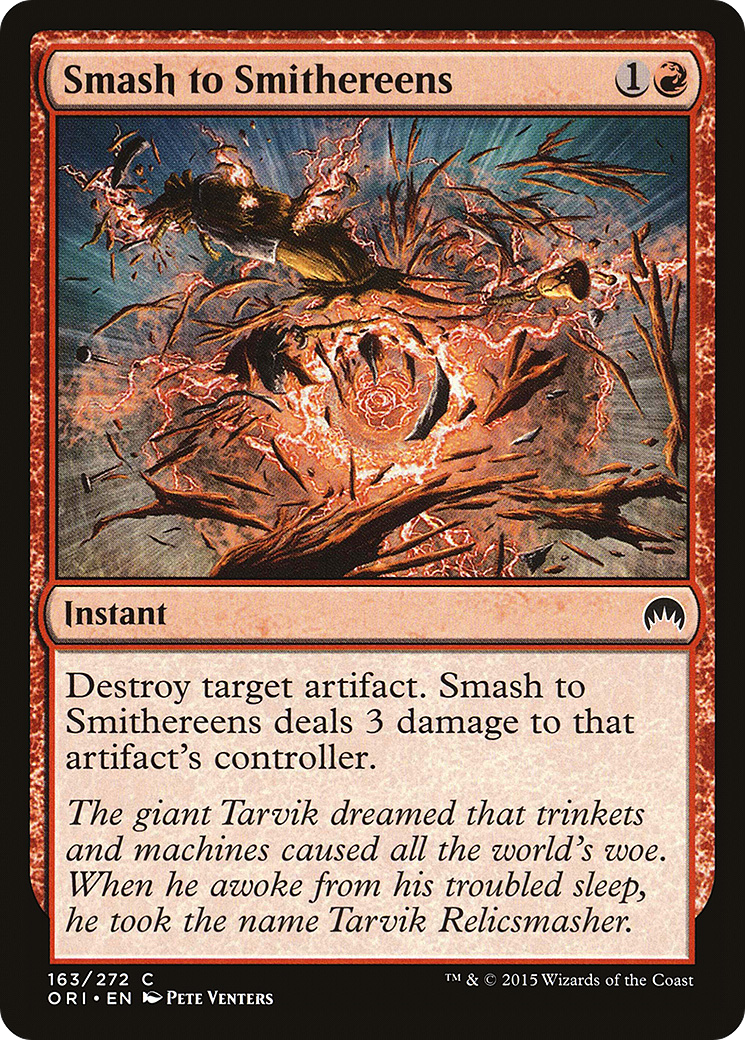Mono-Red is the most aggressive Pauper strategy, capable of explosive starts but also able to grind out card advantage in the late game.
I recently took the deck to a top-four finish at the RIW Hobbies Pauper 1K, as well as a top-four finish in that weekend’s Magic Online Pauper Challenge. I’ve been playing Mono-Red for a while now, and I’m here to talk about how the deck works, provide some insight into card choices and give some tips and tricks for anyone looking to try it out.
The basic idea is to land powerful creatures like Monastery Swiftspear and Dwarven Forge-Chanter, then use your burn spells to clear the way for them to attack. Along the way, Kuldotha Rebirth can sacrifice one of the many artifacts the deck has access to for even more creatures, and Experimental Synthesizer and Reckless Impulse make sure you always have more spells to cast and ways to use your mana.
The two Prowess creatures played can quickly grow thanks to all the one-mana spells in the deck. Monastery Swiftspear’s common printing is a huge reason for the power level of Mono-Red. Other two-mana creatures can be played in place of Dwarven Forge-Chanter, but I like being able to protect it with Prowess triggers and its ability to deal damage by itself thanks to Ward.
Easily overlooked, Voldaren Epicure is a very important piece to the Mono-Red puzzle. Not every hand can have a Swiftspear, so four more one-mana creatures help increase the odds of playing one early. It comes with a Blood token, which is perfect to sacrifice to Kuldotha Rebirth and helps achieve Metalcraft for Galvanic Blast. It also lets you cycle an extra land later in the game, and the one point of damage from its enters-the-battlefield ability does add up.
I like a copy of Goblin Bushwhacker to pair with a group of 1/1s for tons of damage. It’s very bad early and only great with a board full of creatures, so I wouldn’t recommend more than one or two.
The goal when using Kudoltha Rebirth is to sacrifice an extra artifact early to fill the board with Goblins before your opponent can answer them. 16 cards are, or make artifacts, so you shouldn’t have a hard time finding one, but these are two that have some upside when sacrificed.
Implement of Combustion is somewhat innocuous but does a lot for the deck. It’s a good way to spend extra mana, it triggers prowess, and cycles (while dealing a point of damage) when you have nothing better to do. It notably draws you a card even if you didn’t pay the one red mana, so sacrificing it with Rebirth will still give you the card.
Experimental Synthesizer is arguably one of the most powerful Pauper cards, and single-handedly breathed new life into the Mono-Red archetype when it was printed. Timing when to play Synthesizer and when to sacrifice it or activate its ability is one of the trickiest play patterns of the deck and can swing a game completely.
Ideally, you want to have at least one extra mana available to cast any spell that gets exiled when Synthesizer comes into play. The deck does play seven two-mana spells, and it’s always possible to hit a land as well. It’s usually correct to wait as long as possible to cast it, but sometimes you need an artifact for a Rebirth soon or to turn on Metalcraft. There’s nothing like flipping a land you didn’t want to draw or a burn spell you need to cast that turn. Finally, the three-mana ability allows you to regroup from nowhere, creating a 2/2 and giving you an extra card.
Four copies of Lightning Bolt are a given in any red deck, and Chain Lightning is the next best way to deal three damage for one mana.
It’s not hard to trigger Metalcraft for Galvanic Blast, and even doing just two damage can kill early blockers.
Lava Dart is a great way to trigger Prowess multiple times in a turn, and one damage kills a surprising number of creatures in the format. Together with Fireblast, they allow you to cash in extra lands that you can’t loot with Blood tokens.
I’ll always play one Fireblast in any deck full of Mountains as a way to steal a game as the last burn spell to finish off the opponent.
End the Festivities comes in against the mirror as an answer to an early swarm of Goblin tokens. It’s also good against Faeries and various white decks playing creatures with one toughness like Sacred Cat, Spirited Companion, and Inspiring Overseer.
Smash to Smithereens is an obvious choice against Affinity, but is also very powerful against Tron. During the early turns an Energy Refractor or Network Terminal allows them to play more than one colored spell a turn, and taking it off the board can buy you enough time to find lethal burn spells.
Pyroblast is for opposing blue decks, namely Faeries, Blue-Black Control, and Tron. I used to play more, but it’s not great in multiples since you need to apply pressure against those decks early. So, I settled on two copies.
Relic of Progenitus is mainly for the Blue-Black Control matchup but does come in against Goblins as another way to attack the combo. The key against Control is to exile their graveyard as late as possible but before they can cast a Tolarian Terror or Gurmag Angler.
Unholy Heat is yet another card for Blue-Black Control, but it also replaces Chain Lightning when instant-speed removal matters like against Gates and Faeries. Delirium is easier to turn on than you might think at first thanks to all the artifacts in the deck and the different ways to put a land in the graveyard.
Pyrite Spellbomb is there for one card: Crimson Acolyte. Not only does it have protection from red, but it can give other creatures protection from red as well. It’s very hard to win the game if an Acolyte sticks around for more than a few turns, and Pyrite Spellbomb is your one way to answer it.
Remember to cast Experimental Synthesizer or Reckless Impulse before playing your land for the turn, unless you’re specifically trying to play around Spell Pierce or another taxing counterspell.
Great Furnace can be sacrificed to Kuldotha Rebirth like any other artifact. Sometimes it’s correct to Rebirth on turn one, especially if you have two more lands or your opponent won’t have an immediate way to deal with the pressure of three 1/1 Goblins.
Using your mana every turn is very important. It might be better to fire off a Reckless Impulse on turn two so you use all your mana instead of just casting a one-drop.
The Samurai from Experimental Synthesizer is white (and has vigilance), which is very important to remember against opposing Prismatic Strands or other ways to give protection from just one color.
Pyroblast can target any spell or permanent, not just blue ones. It won’t do anything if it’s not blue, but casting it will still trigger Prowess, which can be relevant for extra damage.
Double-check what mana your opponent could produce before casting Chain Lightning. This is most obvious against the mirror, but lots of decks you might not expect can make two red mana thanks to cards like Utopia Sprawl and Abundant Growth.
Finally, I’ve learned to not keep one-land hands at seven cards, no matter how tempting they look. The deck is much more functional with a second land on turn two and has so many ways to mitigate flooding.
Mono-Red is a great way to try out Pauper. It can struggle with opposing Blue-Black Control and certain Gates decks but has little trouble against Green-Red or Black-White midrange lists. It might be easy to pick up, but there are lots of tricky lines and interactions that will reward anyone who spends some time learning to master the Mountains!


